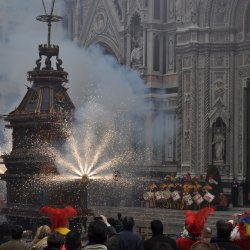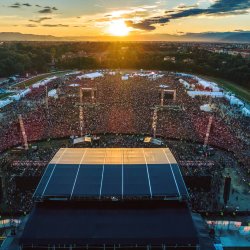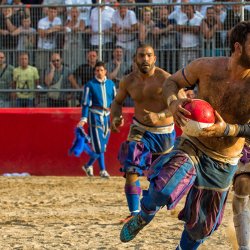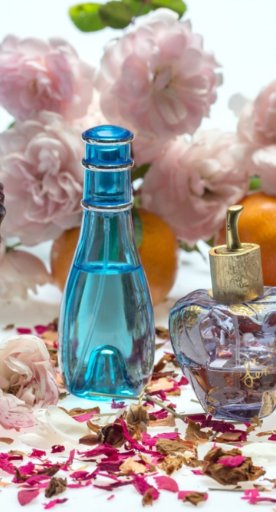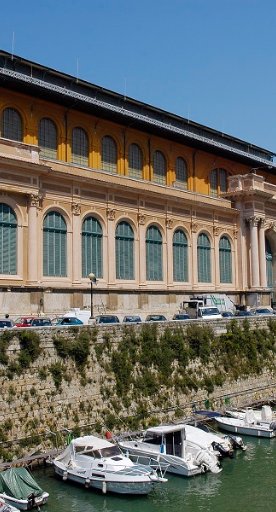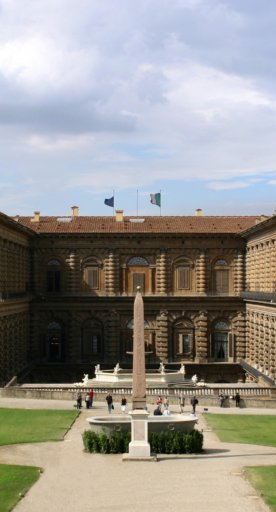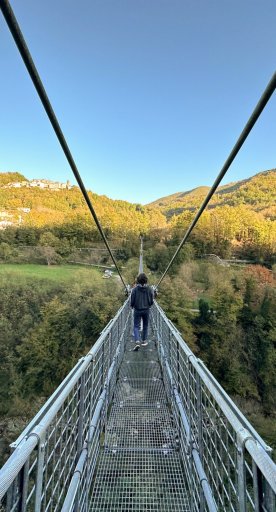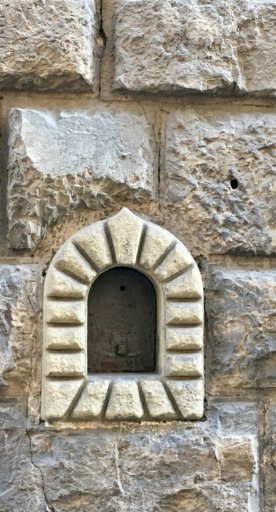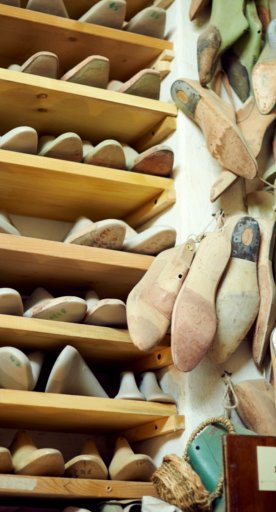Top 10 Tuscan artists
Famous painters, sculptors and architects
Tuscan artists are famous worldwide: they invented and codified things like naturalism and one-point perspective that characterized the Renaissance, impacting the western world’s visual heritage forever. When you visit Tuscany, you experience the environment that inspired these artist’s creativity, you recognize the landscapes that they depicted in their paintings, the faces that they sculpted, and you enter into and feel within you the structures that they built. Who are some of the most important Tuscan artists in history? Here’s our top ten.
-
1.Giotto
-
2.Donatello
-
3.Brunelleschi
-
4.Piero della Francesca
-
5.Leon Battista Alberti
-
6.Leonardo da Vinci
-
7.Michelangelo
-
8.Pontormo
-
9.Giorgio Vasari
-
10.Modigliani
Giotto

The father of the Renaissance is Giotto, the gentle painter whose style anticipated the revolutionary one of the Renaissance by a century. Not much is known of Giotto from a biographical point of view, other than that he was “discovered” by and trained under the great artist Cimabue, but his art speaks for itself. The most important works by Giotto that we have in Tuscany are the frescoes in the Church of Santa Croce and a beautiful crucifix at the Church of Santa Maria Novella. Want to learn more about Giotto? Read about Giotto and where to find him in Tuscany.
Donatello

Donatello is one of the most important Italian sculptors of all time and one of the fathers of the Florentine Renaissance. Donatello’s earliest works were developed in the context of the two most important projects in the city at the time – both the Cathedral and Orsanmichele (a granary turned church) were being decorated with numerous sculptures. These sculptures, which are now preserved at the Museo dell’Opera del Duomo and at the Bargello Museum in Florence, are groundbreaking for the way they represent realistic human weight and expressions. The artist lived a long time and his style evolved with age, leaving us with a legacy of sculpture by him and his many students that we can now admire. Click here to find out where you can see all of Donatello’s works in Tuscany.
Brunelleschi

The main arts of painting, sculpture and architecture all had their rising stars in the Renaissance, and as you may have guessed, the most famous architect of this period is Brunelleschi. While his name is synonymous with the impressive Dome on the Cathedral of Florence, this fifteenth-century artist’s signature style is best understood in the calm and regular space of the Basilica of San Lorenzo. Under the patronage of the Medici family, Brunelleschi broke down space into regular units that forerun modern architecture. He was also the inventor of linear or one-point perspective. Read more about the fascinating life of Brunelleschi and where to see his works in Tuscany here.
Piero della Francesca

The Renaissance didn’t just happen in Florence! Piero della Francesca, another iconic artist of the Quattrocento, was born in Sansepolcro, in the province of Arezzo, and during his career he worked in his home town, in Arezzo, and in the courts of Northern Italy (Rimini and Urbino). Piero was a fervent but early applicant of the newly invented one-point perspective method, which resulted in a slightly static appearance of his scenes, though rather than being a negative, the figures within exude a regal calmness. Amongst works you can visit that exemplify Piero’s truly unique style, don’t miss the Madonna del Parto in Monterchi, a fragment of a fresco that is still revered by local pregnant women. Read this article to learn more about the life of Piero della Francesca.
Leon Battista Alberti

Another important architect that Florence calls its own was Leon Battista Alberti, who belonged to an important Florentine family in exile, and so studied in Bologna. He was the first to analyse the theoretical problem of bringing together art and architecture in a universal Humanist context. Alberti’s works in Florence can be seen as a step beyond the Brunelleschian experience, injecting a more learned knowledge of the ancient past. For his great patron Giovanni Rucellai, he created the façade of the family palazzo, a family chapel with a tiny temple that reproduces the Holy Sepulchre, and finally the façade of Santa Maria Novella, begun in the Gothic style and completed with Alberti’s genius integration of his modern style above.
Leonardo da Vinci

Leonardo da Vinci was much more than a painter: in modern terms we might define him an architect, designer, inventor, scientist, engineer… or more simply, a “Renaissance Man.” Born in 1452 near the town of Vinci, where there is a museum dedicated to him, the young man apprenticed in the workshop of Andrea del Verrocchio; his brilliant career saw him working in Milan, Florence and finally for the King of France. He is known equally for his paintings like the Mona Lisa (now in Paris) and his dense notebooks filled with inventions and observations. In Florence, you can see works by him at the Uffizi and follow in his footsteps in the Florentine hills and near his birthplace. Read more about Leonardo da Vinci in Tuscany.
Michelangelo
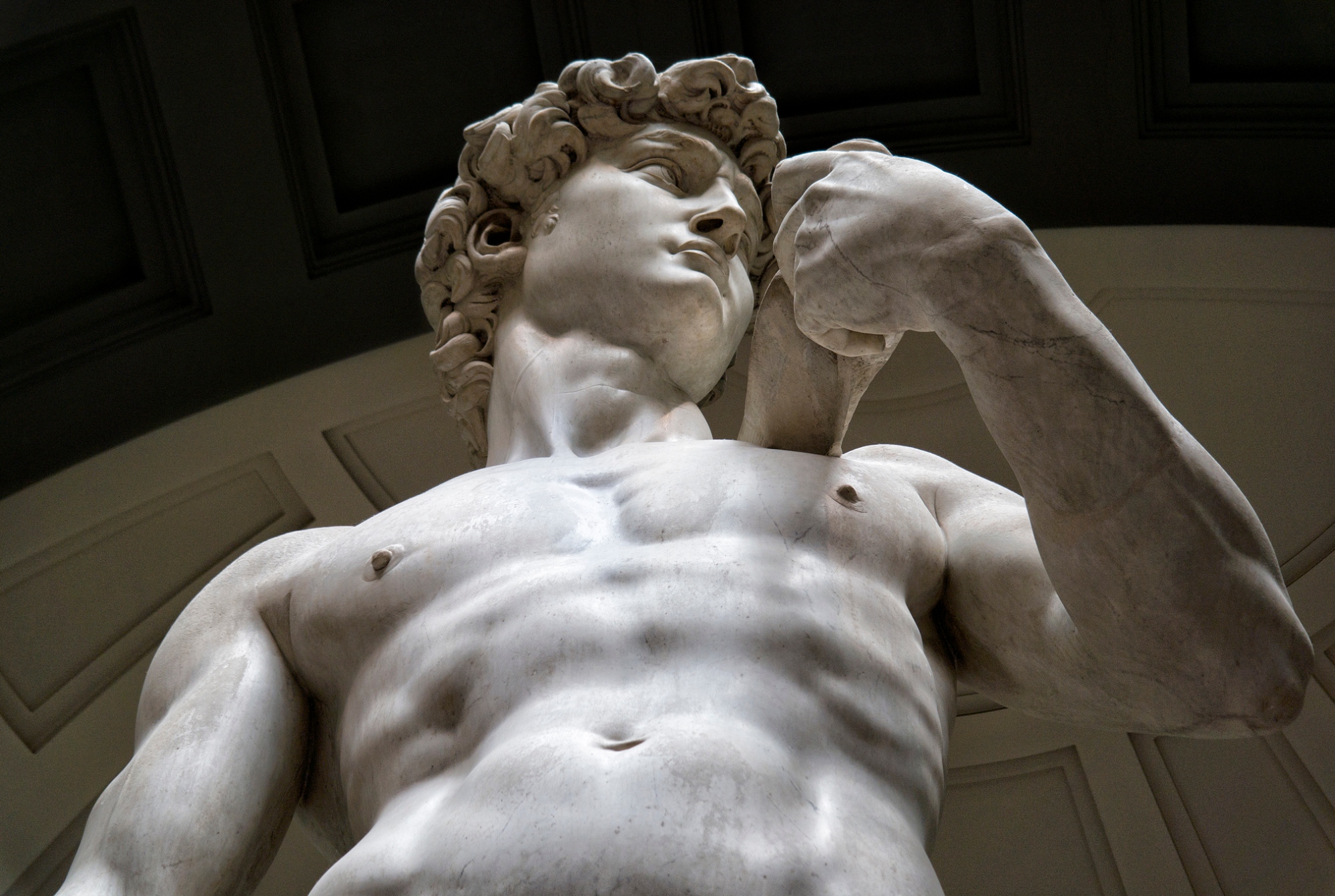
Perhaps one of the most famous artists of all times is Michelangelo Buonnaroti, who was born in 1475 in Caprese, a small town near Arezzo, in Tuscany. Spotted at an early age by Lorenzo “Il Magnifico” of the Medici family, the artist would have a long career, working for numerous popes and responsible for iconic artworks in both painting and sculture, from the early David housed in the Accademia in Florence to the Sistine Chapel ceiling in Rome. Along with Leonardo and Raphael, Michelangelo is considered a High Renaissance painter. Click here to find out where you can visit works by Michelangelo in Florence.
Pontormo

After the heights achieved by Michelangelo and the High Renaissance, historical narrative tends to say that artists no longer knew what to do. Pontormo, born Jacopo Carucci in Empoli in 1494, was one who did. He and his work are classified as “Mannerist,” a style that represents a profound stylistic shift from the calm perspectival regularity that characterized the period before and is considered a step towards the energized style of the Baroque. In the years around 1520 and lasting through the 16th century in some cases, the main artists of Florentine Mannerism are Andrea del Sarto, Pontormo and Rosso Fiorentino, and Vasari. Pontormo’s unique style can be seen in an altarpiece of the Deposition in the Capponi Chapel at Santa Felicita in Florence, and in the Visitation in Carmignano.
Giorgio Vasari

Giorgio Vasari is recognized as the first art historian, but he was also a painter and architect. He wrote the Lives of the Artists to which we are indebted for information about artists from Cimabue to his own age, even if his record is not always a hundred percent accurate. If you look around Florence you’ll find the impact of Vasari in many places, but none so much as in the very central area of Piazza della Signoria and the Uffizi. As architect to the Medici family, Vasari transformed the Palazzo Vecchio (seat of government) into the Medici’s home, built the Uffizi (initially offices, with a nucleus dedicated to the display of works of art), and eventually connected Palazzo Pitti to the latter with a corridor known as Vasari’s corridor. The Arezzo-born Vasari also left a mark on his home town – here is a Vasari itinerary in Arezzo.
Modigliani

While Tuscany’s greatest moment was the Renaissance, creativity endured throughout the centuries, and we wish to end this list with a seminal artist of the twentieth century: Amedeo Modigliani. Born in 1884 in Livorno, he was constantly plagued with lung diseases. He trained in Pietrasanta in Tuscany before moving to Venice, and there he encountered the Impressionism that would inspire him to move to Paris to seek his fortune. Always the starving artist, his unmistakable style of elongated figures and haunting portraits was not appreciated until after his tragically early death in 1920. Follow in Modigliani’s footsteps with this Livorno itinerary.








